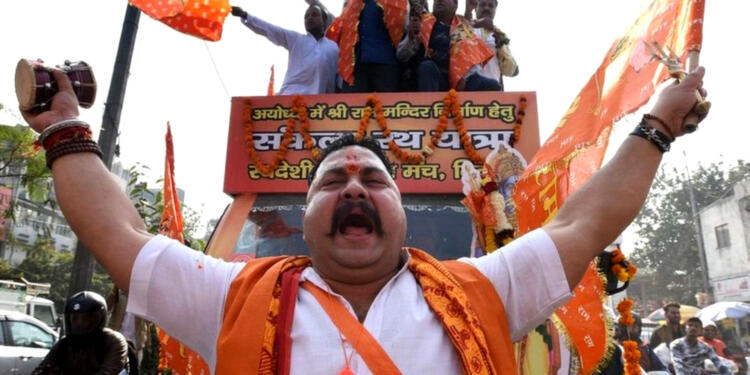The Uttar Pradesh Assembly poll results are indeed historic. This goes back to the days of the emergence of two lines of thought in Indian politics.
Mandal-Kamandal binary explained
‘Mandal politics’ of the late 1980s sought to create a caste coalition of backward classes and ‘Kamandal politics’, a broad strategy of the BJP to bury caste divisions and unite voters.
For the past 30 years or so, politics in several Northern India states, especially UP and Bihar, has been dominated by the Mandal-Kamandal binary. On one hand, there are regional parties and on the other hand, you have the BJP. However, the 2022 UP Assembly poll results show that Kamandal politics is gaining strength, as votes got consolidated under BJP’s Hindutva plank rather than getting divided into caste lines.
Dalit voters choose BJP
The Dalit vote in UP is divided into two segments- Jatav Dalit voters and non-Jatav Dalit voters.
BJP’s development agenda helped it in gaining non-Jatav Dalit votes in different parts of the state including Awadh and Purvanchal. Free ration, Ayushman Bharat health insurance schemes, and housing for the poor under the PM housing scheme were some of the reasons that led to non-Jatav Dalits and other sections of the society voting in BJP’s favour.
Read more: Varanasi, Mirzapur and Gorakhpur— Understanding Modi-Shah-Yogi’s Purvanchal strategy
And then, even more Jatav Dalits have voted in BJP’s favour this time as compared to the 2017 polls. BSP has been traditionally popular amongst Jatav Dalits. In 2017, 87 per cent of Jatav Dalit votes went to BSP, and BJP got only 8 per cent of Jatav votes. But this time, BJP’s share rose to 21 per cent as against BSP’s 65 per cent.
BJP shatters the myth of the ‘Thakur’ party
Before the Assembly elections, a narrative was being weaved that BJP was a party of the Thakurs, and Brahmins will not vote for it. But this myth stands shattered. 89 per cent of the Brahmins voted for the BJP, up from 83 per cent in 2017.
This may as well have been a turning point in the Assembly elections. Before the polls, all the parties were said to be eyeing Brahmin voters. It was only natural since Brahmins make up a significant voter constituency in the state, next only to Jatavs and Yadavs.
Non-Yadav OBCs and Rajputs choose BJP
In 2017, 58 per cent non-Yadav OBCs had voted in BJP’s favour. This figure has surged further to 65 per cent this time around.
On the other hand, 87 per cent of Rajputs have voted in BJP’s favour as against 70 per cent votes in 2017.
Jats vote for BJP despite farm protests
In the run-up to the Assembly polls, it was being said that BJP will not do well in Western Uttar Pradesh.
Read more: Why Western UP will witness the endgame in UP elections
Why? Well, it was being surmised that the Jats, the dominant community in Western Uttar Pradesh wasn’t happy with BJP because of the three farm laws and the agitation that followed. Western UP has a good concentration of farmers which explains the narrative.
However, 54 per cent of the Jats voted in favour of the BJP alliance. The BJP has found more electoral support from the community, as 38 per cent of Jats had voted for it in the 2017 Assembly polls.
At the end of the day, the idea of backward caste voters vs. upper caste voters seems to have become anachronistic, at least if we go by the 2022 Assembly poll results. Caste divisions have clearly got blurred and the people of UP seem to have in favour of growth and development.
